The first jet fighters AS Yakovlev. Part II
The chassis with a tail wheel, preserved from the piston Yak-3, was one of the weak points of the Yak-15 fighter. Along with the limitation of the review during taxiing, it entailed such unpleasant consequences as the destruction of the airfield's coating from the effects of the hot jet of the engine and damage to the horizontal tail of the chipped particles of the concrete coating. It was recognized the need for introduction on the aircraft chassis with a nose strut. This work was carried out in parallel with reference to single and double options.
It turned out that the double training machine with a nose wheel was the first to be tested, it received the designation Yak-21T in the prototype, where T means "three-wheeled chassis". The first prototype of the Yak-21T was built at the plant number 464 with extensive use of parts and assemblies of the serial version of the Yak-15. The car received the 01464 serial number (the first jet aircraft of the 464 plant) and the 22 tail number. Common to the double and single options were changes in the design associated with the installation of a new chassis. In the lower part of the nose gondola on two box spars the nose wheel hubs were installed. The nose support was made semi-removable: it was pressed against the fuselage and closed with a shield. Behind the retracted nose wheel, there was a fairing (it was absent from the Spark). The main pillars with the new chassis scheme had to be moved back beyond the center of gravity of the aircraft, now they were behind the first spar, which resulted in changes in the design of the wing root. In the nose of the wing spars and ribs were added to increase stiffness and allow the installation of kerosene tanks. In the middle (along the chord) part of the wing, the root kerosene tanks were cut along the edges of the chassis and separated from it by correspondingly curved spars.
The second cabin was installed on the Yak-21T in place of the rear fuselage kerosene tank of the Yak-15 aircraft, as a result of which the fuselage shape was changed accordingly - the spars of the fuselage were extended and two frames were added. Ahead of the fuselage side members, four attachment points for the detachable front part of the fuselage (the nose gondola) and two engine attachment points were welded.
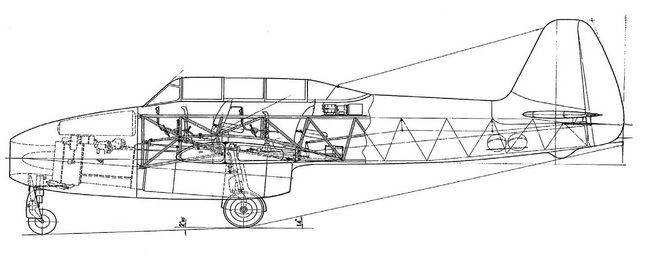
For the Yak-21T, a new lamp, modified as compared with the Yak-21, was developed, having two sliding parts, similar to the lantern of the Yak-18 aircraft (the binding of the faceted visor on the first prototype differed from the subsequent serial ones). Each cabin had pedals, an aircraft control knob, a throttle valve, a fire hydrant control lever, an emergency chassis release valve, a trimmer control wheel, the instruments necessary for aerobatics and engine control.
The vertical tail of the new geometry was installed, it became more angular. At the same time, the area of the keel increased, and the steering wheel area slightly decreased. It is curious that in the preliminary draft of January 1947, the modified Yak-21 already had a nose wheel, but still kept the cockpit canopy and vertical tail as the original Yak-21.
To speed up the start of the test, the customer made a decision to allow a car to them without installing weapons. The plane made the first flight in May 1947 of the year and after two weeks of factory tests was handed over to state tests, which ended on July 1 on the 1947 of the year (according to other sources, on August 10 officially ended). The Act on the results of state tests said that "according to its flight-tactical and flight characteristics tested, the aircraft meets the requirements of the Air Force and can be used for removal and training of pilots in schools and combat units for training on jet planes." This conclusion was made, despite the presence of a number of significant drawbacks. So, the plane had almost twice the smaller range than indicated in the task. With a full fuel tank (580 l.) Flight range at the instrument speed in 380 km / h was 370 km, and the duration of the flight - 49 min. The permissible flight duration for variable engine operation at an altitude of 3000-3500 m was only 25 minutes, however, according to the commission, this allowed for a training flight to perform aerobatics.
There was a car and its advantages - the plane steadily kept at high angles of attack, virtually without delay carried out the spin, and allowed the execution of aerobatic figures with overload in 8g. Taking into account the urgent need for a jet training aircraft for the Air Force, the Research Institute of the Air Force recommended the Yak-21T for mass production, suggesting that the standard aircraft be equipped with a single NS-23 cannon and a C-13 photo-gun. It was suggested that the first 20 serial aircraft be subjected to troop testing.
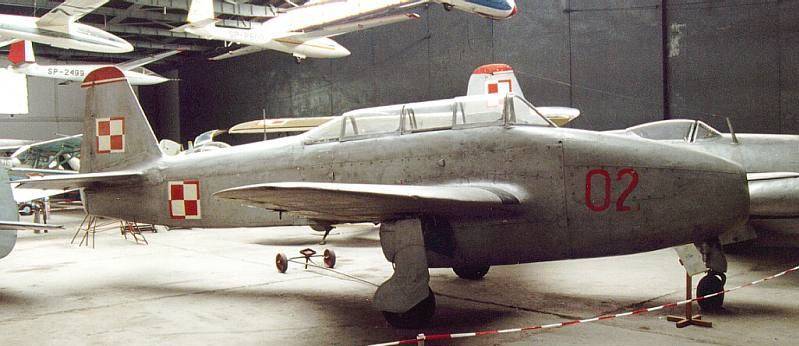
At the same time, it was proposed to eliminate a number of shortcomings in the series that were revealed during the past tests. Thus, it was stated that “an insufficient amount of rear cockpit equipment (there is no chassis control, landing plates, front cockpit brakes off, engine start aggregates in flight, engine stop assemblies and the possibility of radio transmission), a low position of the instrument panel in the front cockpit making it difficult to observe the instruments in flight, as well as the presence of other defects complicates the implementation of export and training flights. These deficiencies are subject to mandatory elimination before adopting ".
It was noted that the aircraft allows the implementation of a full range of aerobatic maneuvers, but without creating negative overloads; Therefore, it is necessary to alter the fuel system in order to ensure the possibility of performing maneuvers and pilotage figures with negative overloads.
The aircraft was mass-produced at the aircraft factory No. 31 under the name Yak-XNUMHUTI (there is also the designation UTI Yak-17; first, the Spark was simply called Yak-17, but then this designation was given to the single-seater). From April to June 17, military tests of 1948 modified serial Yak-10UTI were conducted with RD-17 aircraft engines, which took place in 10 IAP 162 OVER 309 Air Force. The conclusion of the test results stated that the Yak-XNUMHUTI has good take-off and operational properties and is well suited for training cadets, hauling and training of pilots in combat units of the USSR Air Force. Aerobatic properties were especially noted: “Aerobatics on an airplane are performed easily. Unlike airplanes with vintomotor group, it is very stable and well obey the rudders. Flight qualities of the aircraft are excellent. " However, some of the previously noted deficiencies of the experimental machine were still not eliminated.
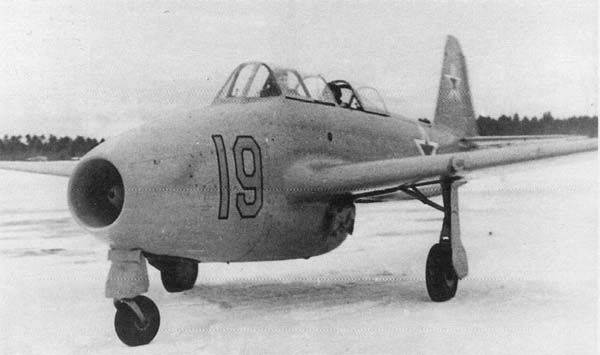
In the series on the Yak-17UTI, no weapons were installed (such was the serial Yak-17UTI No. 20041, issued by 31 in April 1948, which from 18 June to 20 in July 1948, was tested in the Civil Code Air Force Institute). According to the results of state tests of the experimental machine, as well as military tests of ten Yak-XNUMHUTI aircraft, a series of improvements were made in the series. So, it was necessary to take measures to eliminate the ingress of gases from the engine into the cabin, increase the rear cover of the cockpit canopy, correct the glazing defects that distorted visible objects, expand the set of rear cabin equipment, adapt the fuel system to negative overloads, and others. installed TRD RD-17А with 20041-hour resource instead of RD-10 with 50-hour resource. The capacity of the fuel system was increased by 10 L, however, the range decreased to 25 km versus 30 in the prototype - which was the result of the increased fuel consumption of the engine in this instance.
A little later, the Sparky experienced an experienced single-seat fighter with a new chassis, which received the factory name Yak-15U ("improved"). In some documents, it was also referred to as the “Yak-15U RD-10 with a three-wheel chassis layout and outboard fuel tanks.” The design of the nose support and the converted main landing gear was similar to that used on the Yak-21T. As in the "Spark", the shape of the tail was changed, with the vertical and horizontal tail increased in area. In the longitudinal control channel, a spring and a rocking chair were installed, which increased the gear ratio from the handle to the elevator by 20%. The wing tips modified to provide a suspension of two fuel tanks with a total capacity of up to 331 l of kerosene. In order to improve the pilot's working position, the cockpit on the Yak-15U was increased both in length and height, the curved visor of the flashlight, distorting the view, was replaced with a flat, recruited from three glasses, and the teardrop cap was retained. The Yak-15U passed state tests from August 27 to November 15 1947. The training fighter carried armament from the 2 NS-23 guns, the ASP-1 sight and the PAH-22 gun mounted gun in the right console. The normal take-off weight of the aircraft was 2890 kg, and taking into account the outboard tanks - 3240 kg. Following the test, the aircraft was recommended for adoption. After some modifications and repeated state tests, the new fighter, 20 March 1948, was approved for mass production at the aircraft factory number 31 with the assignment of the name Yak-17 (the second with this designation). Single Yak-17 was built together with a double version of the Yak-XNUMHUTI.
From December 1948 of the year to 10, January 1949 conducted control tests of the serial Yak-17 No. 1046 with the RD-10A engine, released in October 1948 of the year. This and other samples of the later series had a number of detailed differences in equipment, engine and armament from the specimen that passed state tests. So, it was installed front armored glass. The armor thickness was increased from 6 to 8 mm. The vehicles were equipped with an ASP-1H sight. In the right plane of the wing, they installed a C-13 photo-pistol, instead of a PAH-22 photo-pistol. Above the ASP-1H sight on the canopy of the flashlight was installed a control photo-gun C-13, designed for simultaneous photographing of the target and the moving reticle of the sight. Ammunition was increased to 70 ammunition for each gun. The capacity of the fuel system has been increased by 40 l. Machine number 1046 had a normal flight weight 2972 kg (versus 2890 kg for an experienced Yak-15У); Apparently, this is connected with the fact that its maximum speed at an altitude of 5000 m was only 726 km / h versus 748 km / chuYak-15, which, of course, cannot be called impressive against the background of other jet fighters of that time.
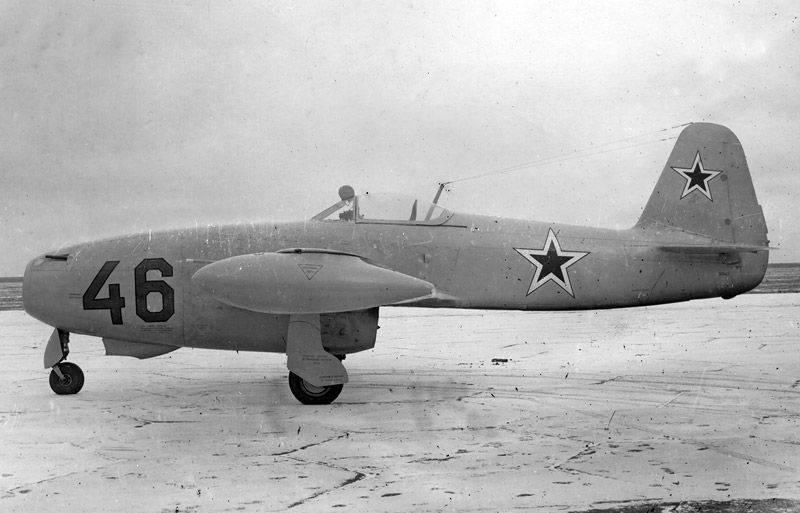
There were other changes in the serial Yak-17 compared to the experimental version. The horizontal tail span increased from 3,25 to 3,6. The HC-23 cannons were replaced with the HC-23K with extended barrels. Some machines installed telescopes АСП-ЗМ and counters of the rest of cartridges CSS-1. Airplanes of the late series had engines RD-10А with a resource increased to 50 hours. A total of 430 Yak-17 and Yak-XNUMHUTIs were produced, including 17 copies in 279 year. Their production ended in 1948.
The arrival of the Yak-17 fighters in the combat units was a long process; for example, the 472-IAP, stationed in the Kursk area (Kursk Vostochny base), received Yak-17 airplanes in the spring of 1950. Already 22 July, he was recognized as having reached full combat readiness and put on combat duty in the air defense system. Six months later, at the end of 1950, they began to rearm this regiment with more modern MiG-15.
The Yak-17, like its progenitor Yak-15, did not have high flight data - as noted above, the maximum speed was not high, especially the flight range was not enough. Reactive Yakovlev firstborn found in the Soviet air force relatively limited use, soon giving way to more advanced machines. However, the value of the Yak-15 / 17 family of fighters should not be underestimated - they played an important role as transitional ones in mastering the fundamentally new for that time jet technology. The essential point was that they maintained continuity with the piston fighters of Yakovlev and had good aerobatic properties. This helped to overcome the caution shown by the pilots in relation to jet technology. On the Yak-15, Yak-17 and Yak-XNUMHUTI aircraft, hundreds of Air Force pilots were trained.
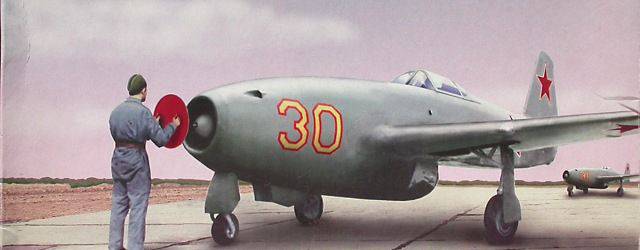
These machines were exported to Bulgaria, Romania, Czechoslovakia, Poland and China. In the Bulgarian Air Force, both combat and training versions of this fighter were used according to some sources, according to others - only the Yak-17UTI, which arrived at two air regiments and aviation School "George Benkowski".
In Romania, the Yak-XNUMHUTI was used in parts of the 17 th IAD. One Yak-XNUMHUTI, board 97, is now an exhibit of the Museum of Science and Technology "Stefan Prokopi" in Yasy.
A small number of Yak-17 aircraft (probably from the Soviet Air Force) entered Czechoslovakia. One of them - the 30 board - is preserved as an exhibit of the Aviation Museum at the airport of Kbely, Prague.
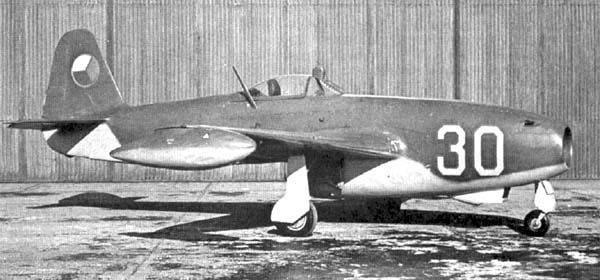
More interesting was the career of the Yak-17 in Poland. At the end of 1949 - the beginning of 1950. The governments of the USSR and Poland were considering the deployment of a licensed Yak-17 building at an aircraft factory in Mielec, where the car was even assigned the C-1 brand designation. However, these plans were soon abandoned in favor of introducing more advanced models (licensed production of the MiG-15 fighter was deployed in Poland). Later, the aircraft engine plant in Rzeszow produced under license a lot of X-NUMX RD-30A engines intended for Yak-10YI aircraft entering Poland. The Polish Air Force received its first three Yak-17 copies in July 17. In the Polish military units this fighter received the unofficial name Agatha. Along with the combat version, a number of training Yak-1950UTIs arrived in Poland, which in Poland were named Yak-17В. These machines received a school of pilots in Radom, created in 17, which used them as transitional ones to train pilots for the Yak-1951 fighter. The Yak-23B were used for a short time and were soon replaced with UTI MiG-17. In 15, two Yak-1957В aircraft were transferred to the Warsaw Aviation Institute. One of them had a tail number "17-red", the second - "1-red." Later, the Quartet received civil registration marks SP-GLM and was used to train the institute pilots who were to test the jet trainer of the Polish design TS-4 Spark. The aircraft was also used for test flights related to the study of stability and controllability. Yak-11В SP-GLM ended the flight service in February 17 of the year, and in 1960-m was written off and transferred to the museum, where on board the aircraft next to the civil registration marks caused military "shahnitsy". Now this copy (already only in military designations, with the tail number “1963”) is retained as an exhibit of the Museum of Aviation and Astronautics in Krakow.
In 1950, large deliveries of Soviet aircraft began in China, where, with the assistance of Soviet instructors, training of flight personnel and technical personnel for the PRC Air Force was launched. A small number of MiG-9 and Yak-17UTI aircraft were used for retraining to jet fighters. Assistance in the training of Chinese pilots on the Yak-XNUMHUTI was rendered, in particular, by the 17-th IAD transferred to the PRC 29-th GvIAP.
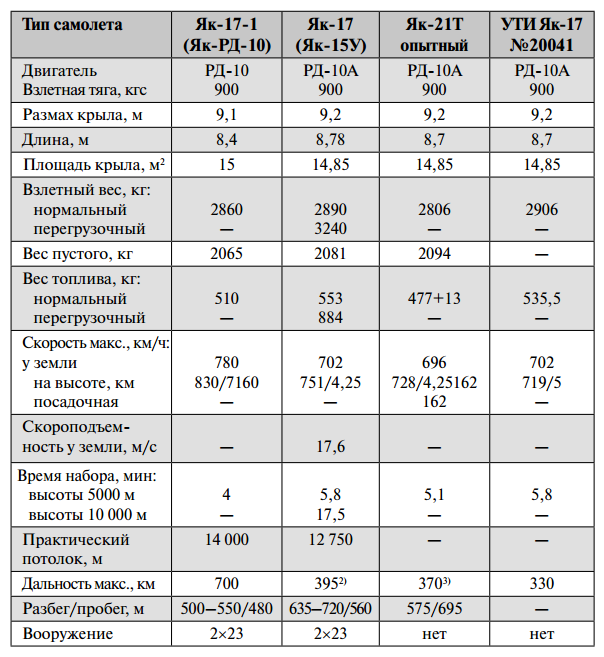
Sources:
N. Yakubovich. USSR Reactive Firstborn - MiG-9, Yak-15, Su-9, La-150, Tu-12, Il-22, etc. M .: Yauza, 2015. C. 25-43.
Gordon E. Reactive First-born Yakovlev // Aviation and Time. 2002. No.6. C. 5-17.
Shvydkin A. Yak-15: jet “hawk” // Aviapanorama. 2004. No.5. C. 12-16.
Komissarov S. Jet fighters of the Yak-15 / 17 family // Wings of the Motherland. 2007. No.7. C. 27-31.
Yakubovich N. Reactive "pen". Yak-17 // Wings of the Motherland. 1999. No.12. C. 1-3.
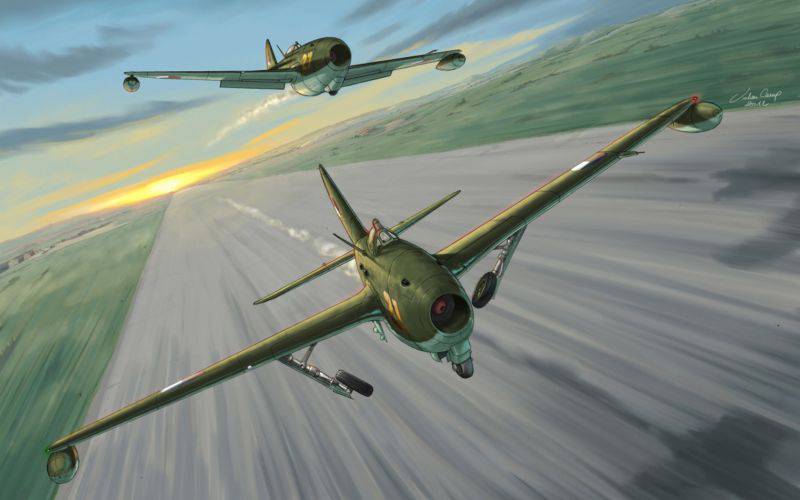
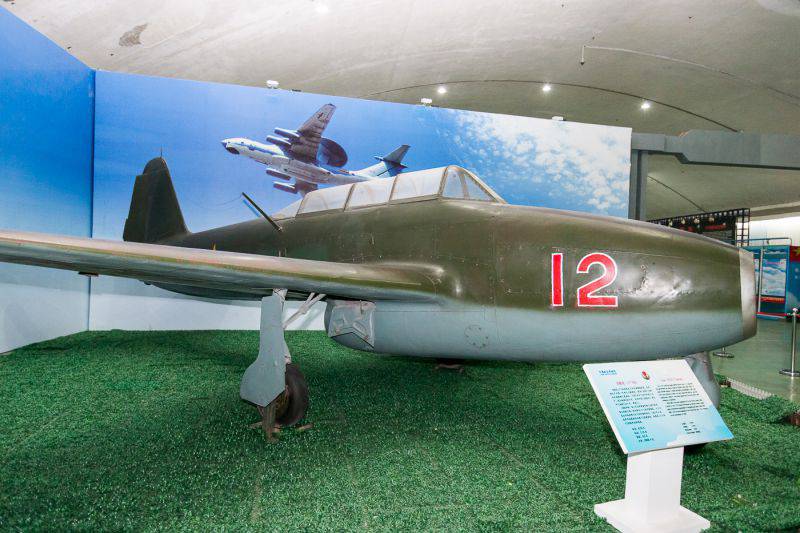
Information